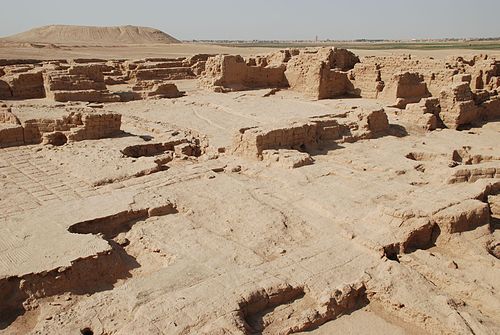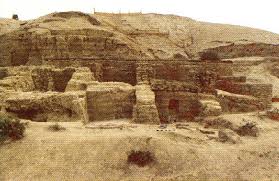Dur-Katlimmu is a prominent archaeological site in Syria’s Deir ez-Zor Governorate, identified as the ancient Assyrian city, now known as Tell Sheikh Hamad, approximately 70 kilometers east of Deir ez-Zor on the eastern bank of the Khabur River. The site’s historical name was confirmed through cuneiform tablets discovered at the tell: in 1977, thirty tablets were unearthed in an irrigation canal, including one that explicitly identified Tell Sheikh Hamad as the city of Dur-Katlimmu. These texts date to the Middle Assyrian period, specifically during the reigns of Shalmaneser I (1274–1245 BCE) and Tukulti-Ninurta I (1244–1208 BCE).
Strategically located atop a mound overlooking the river, Dur-Katlimmu was naturally shielded from flooding, enabling continuous habitation from the fourth millennium BCE to the present. The city reached its greatest extent during the Assyrian period (ca. 1300–600 BCE), encompassing an area of 110 hectares.
Excavations began in 1978 by a German archaeological team from the Free University of Berlin, led by Professor Hartmut Kühne. The initial season revealed an archive chamber containing cuneiform tablets, later found to be part of a substantial architectural complex. Subsequent excavations uncovered ten rooms, measuring 40 meters in length and 20 meters in width, built of sun-dried mudbrick. The structure had suffered extensive fire damage but remained remarkably intact, with some walls preserved to a height of five meters, suggesting it may have once included a second storey.
The site’s archive yielded over 600 cuneiform tablets, a significant number in archaeological scholarship. One key tablet mentions the deployment of military forces to Dur-Katlimmu, confirming the presence of a garrison and identifying the governor’s residence within the city palace. This directly affirms the site’s political and military significance, indicating that the Middle Assyrian Empire extended its frontier as far as the lower Khabur River in Syria. The city’s principal function was likely the protection of the empire’s southern border.
During the Neo-Assyrian period (1000–600 BCE), Dur-Katlimmu remained a strategic military post situated along the route frequented by Assyrian kings. Archaeologists also uncovered clay tablets bearing seal impressions used by high-ranking officials, closely resembling those found in the archival chamber. This implies that goods stored in ceramic vessels were officially sealed and distributed within the palace, pointing to a highly organized administrative system.
The art of seal engraving at the site is distinguished by striking visual scenes, such as a leaping winged bull and a guardian figure depicted as a winged deity, located at the city’s northeastern corner. Additionally, an exterior wall fortified with towers—dating from the 9th to 6th century BCE—was identified, alongside a facility that likely served as an arms depot or military barracks.
All evidence confirms Tell Sheikh Hamad / Dur-Katlimmu as one of the most important archaeological sites along the Khabur River in Syria’s Jazira region—a location of exceptional historical depth, urban complexity, and imperial significance.








